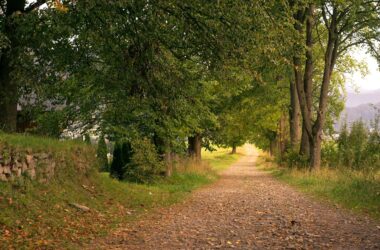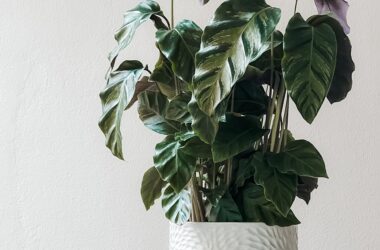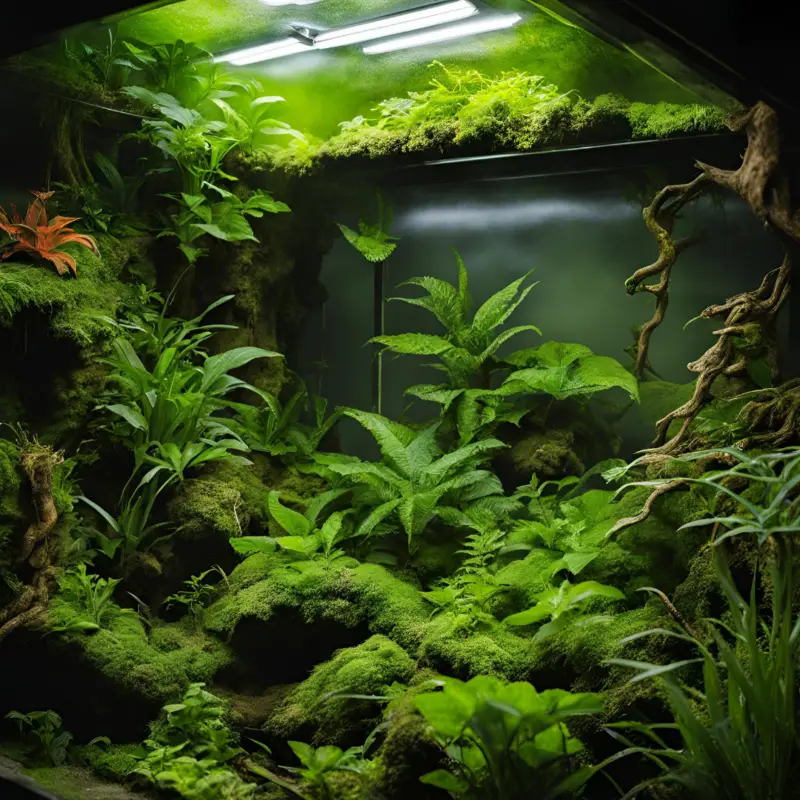Pothos (Epipremnum aureum)
Pothos, also known as Devil’s Ivy, is a highly versatile and resilient plant perfect for bioactive vivariums. Its vibrant green leaves with variegated patterns create a lush and natural look. Pothos is a climber, making it ideal for covering backgrounds or creating cascading foliage over rocks and branches. It’s known for its ability to thrive in a variety of light conditions, from low to bright indirect light, and can tolerate some neglect, making it a great choice for beginners.
Beyond its aesthetic appeal, Pothos plays a crucial role in maintaining the health of a bioactive vivarium. Its fast growth rate helps in oxygenating the enclosure and removing toxins from the air, creating a cleaner and healthier environment for the inhabitants. Additionally, its roots provide microhabitats for beneficial microorganisms, which contribute to the overall ecosystem balance.
Snake Plant (Sansevieria trifasciata)
The Snake Plant, also known as Mother-in-Law’s Tongue, is a robust and striking plant with tall, sword-like leaves. Its vertical growth habit adds height and structure to a bioactive vivarium, making it a visually appealing choice. This plant is incredibly hardy and can thrive in low light conditions, making it suitable for vivariums with limited natural light. It’s also drought-tolerant, requiring infrequent watering, which reduces the risk of overwatering and root rot.
In a bioactive vivarium, the Snake Plant contributes significantly to air purification. It absorbs toxins such as formaldehyde and benzene, improving air quality for both the plant’s co-inhabitants and humans if the vivarium is kept indoors. Its sturdy nature makes it a long-lasting addition to the enclosure, providing consistent greenery and oxygenation without demanding much maintenance.
Bromeliads (Various species)
Bromeliads bring a touch of the tropics to a bioactive vivarium with their vibrant colors and unique rosette shape. These plants are epiphytic, meaning they can grow on other surfaces like branches and rocks without needing soil. This allows for creative and space-efficient planting arrangements, adding vertical interest and variety to the enclosure. Bromeliads prefer bright, indirect light and high humidity, making them well-suited for tropical-themed vivariums.
The presence of Bromeliads in a vivarium benefits the ecosystem in several ways. Their central cups hold water, providing hydration sources for small animals and insects. These water reservoirs can also host beneficial microorganisms, enhancing the biological filtration of the vivarium. Additionally, Bromeliads contribute to the overall humidity levels, creating a microclimate that supports the health and well-being of the vivarium’s inhabitants.
Ficus (Ficus pumila)
Ficus pumila, commonly known as Creeping Fig, is a small-leaved climbing plant that excels in creating dense green backgrounds in bioactive vivariums. Its fast-growing nature allows it to quickly cover surfaces, providing a natural and immersive look. This plant prefers moderate light and humidity, making it adaptable to various vivarium conditions. Its ability to cling to walls and other surfaces makes it an excellent choice for vertical gardening within the enclosure.
In a bioactive vivarium, Ficus pumila plays a vital role in the ecosystem. Its dense foliage offers shelter and hiding spots for small creatures, enhancing their sense of security. The plant’s root system helps in stabilizing the substrate and preventing erosion, maintaining the structural integrity of the vivarium. Additionally, Ficus pumila contributes to the overall humidity levels, creating a suitable environment for moisture-loving species.
Spider Plant (Chlorophytum comosum)
The Spider Plant is a popular choice for bioactive vivariums due to its ease of care and ability to adapt to various environments. Its arching leaves create a cascading effect, adding a dynamic visual element to the enclosure. Spider Plants thrive in bright, indirect light but can also tolerate lower light conditions, making them versatile for different vivarium setups. They are known for their ability to produce plantlets, which can be propagated easily to expand greenery within the vivarium.
Aside from its aesthetic contributions, the Spider Plant plays an important role in air purification. It absorbs pollutants like formaldehyde and xylene, improving the air quality within the vivarium. Its root system also helps in stabilizing the substrate, preventing erosion and maintaining the structure of the enclosure. The Spider Plant’s resilience and low maintenance requirements make it a reliable and long-lasting addition to any bioactive vivarium.
Philodendron (Various species)
Philodendrons are a diverse group of plants known for their lush, tropical appearance and adaptability. With varieties that can climb or trail, they offer versatile options for decorating a bioactive vivarium. Philodendrons thrive in moderate to bright indirect light and prefer a humid environment, making them well-suited for tropical or rainforest-themed vivariums. Their large, glossy leaves add a touch of exotic beauty and create a sense of depth in the enclosure.
In a bioactive vivarium, Philodendrons contribute significantly to the ecosystem’s health. Their robust growth helps in oxygenating the air and providing microhabitats for beneficial microorganisms. The plant’s root system aids in stabilizing the substrate, while its leaves can offer shelter and hiding spots for small inhabitants. Philodendrons are also known for their air-purifying properties, absorbing toxins and improving the overall air quality within the vivarium.
Peperomia (Various species)
Peperomia plants are compact, colorful, and perfect for adding variety to a bioactive vivarium. Known for their thick, fleshy leaves, these plants come in a range of colors and patterns, from deep green to variegated shades. Peperomias prefer moderate light and high humidity, making them ideal for vivarium conditions. Their small size makes them suitable for foreground planting, adding texture and interest to the lower levels of the enclosure.
The role of Peperomia in a bioactive vivarium extends beyond aesthetics. These plants help in maintaining humidity levels, essential for the health of many vivarium inhabitants. Their root system supports the substrate’s stability, preventing erosion and promoting a balanced ecosystem. Peperomias are also relatively low maintenance, making them an excellent choice for both beginners and experienced vivarium enthusiasts looking to add diversity to their plant collection.
Fern (Nephrolepis exaltata)
The Boston Fern, or Nephrolepis exaltata, is a classic choice for creating a lush, forest-like atmosphere in a bioactive vivarium. Its feathery, arching fronds add a soft, natural look to the enclosure. Boston Ferns thrive in high humidity and indirect light, conditions commonly found in tropical-themed vivariums. Regular watering and misting help maintain their lush appearance, making them a bit more demanding but highly rewarding plant.
In a bioactive vivarium, Boston Ferns provide essential ecological benefits. Their dense foliage offers cover and climbing opportunities for small animals, enhancing their habitat. The plant’s high transpiration rate helps in maintaining humidity levels, creating a suitable environment for moisture-loving species. Additionally, Boston Ferns contribute to air purification, absorbing pollutants and improving the overall air quality within the vivarium.
Fittonia (Fittonia albivenis)
Fittonia, also known as the Nerve Plant, is celebrated for its striking vein patterns and vibrant colors. This small plant is perfect for adding a pop of color and intricate detail to a bioactive vivarium. Fittonia prefers high humidity and low to moderate light, making it well-suited for the lower levels of the enclosure or shaded areas. Its compact growth habit makes it ideal for ground cover, creating a lush, carpet-like effect.
Fittonia plays a significant role in the health of a bioactive vivarium. Its presence helps maintain humidity levels, essential for the well-being of many vivarium inhabitants. The plant’s root system aids in substrate stability, preventing erosion and promoting a balanced ecosystem. Fittonia’s low-growing nature also provides hiding spots and shelter for small creatures, enhancing their sense of security and overall habitat quality.
Anubias (Anubias barteri)
Anubias barteri is an aquatic plant that also thrives in high-humidity terrariums, making it a unique and versatile choice for bioactive vivariums. Its broad, dark green leaves add a striking visual contrast and can be used to create a lush, natural appearance. Anubias can be attached to rocks or driftwood, allowing for creative planting arrangements. It prefers low to moderate light and is relatively slow-growing, which reduces the need for frequent maintenance.
In a bioactive vivarium, Anubias contributes to the ecosystem in several ways. Its hardy nature makes it a long-lasting addition, providing consistent greenery and oxygenation. The plant’s root system can help in stabilizing the substrate and offering microhabitats for beneficial microorganisms. Anubias also supports the humidity levels within the vivarium, creating a suitable environment for both aquatic and terrestrial species.




